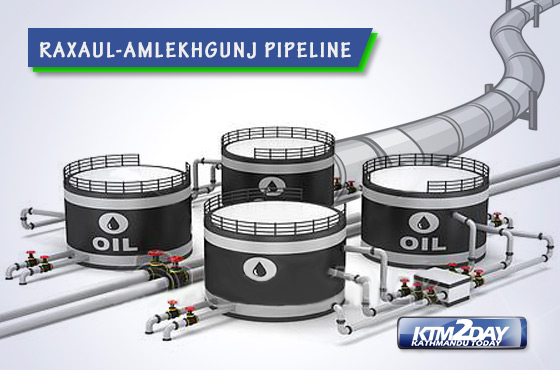Nepal-India cross-border oil pipeline to complete by 2020


The construction of a Nepal-India cross-border oil pipeline is expected to be completed by June 2020 with both countries agreeing to rush the project.
In 2015, the two governments signed an agreement to lay a 69-km pipeline from Motihari in India to Amlekhganj in Nepal to eliminate the vagaries of transportation by tanker truck. Since then, preliminary work has been done on only 6 km of the proposed pipeline.
Prime Minister KP Sharma Oli and his Indian counterpart jointly laid the foundation stone for the pipeline during his state visit to India last week.
“With this initiative from both governments, the construction of the cross-border pipeline is likely gain pace,” said Birendra Kumar Goit, spokesperson for Nepal Oil Corporation (NOC), the sole importer and distributor of fuel in Nepal.
The pipeline was proposed in 1995, but the project gained shape only after the two governments signed an agreement on August 25, 2015. Nepal has identified the Amlekhgunj-Raxaul-Motihari oil pipeline as a national priority project. The construction of the project is expected to help maintain smooth supply of petroleum products to Nepal besides reducing transportations costs.
According to NOC, the pipeline will have a diameter of 10.75 inches and will transport 2 million litres of oil daily. Nepal’s fuel requirement amounts to 7 million litres daily.
The pipeline will bring petroleum from Motihari in Bihar to NOC’s depot located at Amlekhganj. Pumping facilities will be installed at the IOC depot in Motihari. Of the pipeline’s total length, 32.7 km falls in Indian territory and 36.2 km in Nepali territory.
Goit said construction work was progressing on the Pathlaiya-Amlekhgunj segment. “There are no human settlements in this area. The pipeline’s alignment at other places passes through human settlements, and that means residents will have to be relocated first,” he said. An estimated 4,000 squatter settlements will need to be cleared and 2,100 electricity poles shifted, he added.
The pipeline is being laid alongside the Amlekhgunj-Raxaul highway. Goit said they were planning to revise the alignment slightly to minimise the hassle of shifting squatter settlements and reduce the number of trees that will need to be cut down.
“We have proposed shifting the alignment slightly to the east of the highway in the Environment Impact Assessment that is under the purview of the Ministry of Forests and Environment,” said Goit. He added that only 5,000 trees would need to be cut down if the alignment is shifted. Earlier, they had estimated that 25,000 trees would have to be cut down.
The project stalled for two years due to slow progress in conducting a detailed engineering survey, acquiring land and calling for tenders. While the detailed engineering survey has been completed, NOC still has to finalise the land acquisition process.
IOC has handed over the construction work partially to Likhiya Infrastructures, an Indian company. Likhiya will lay the Nepali section of the pipeline and has promised to complete the project in 15 months.







![Citroën Oli [all-ë]: A Revolutionary Concept Car Redefining Sustainable Mobility Citroën Oli [all-ë]: A Revolutionary Concept Car Redefining Sustainable Mobility](https://i.imgur.com/PAiZR7y.jpeg)







